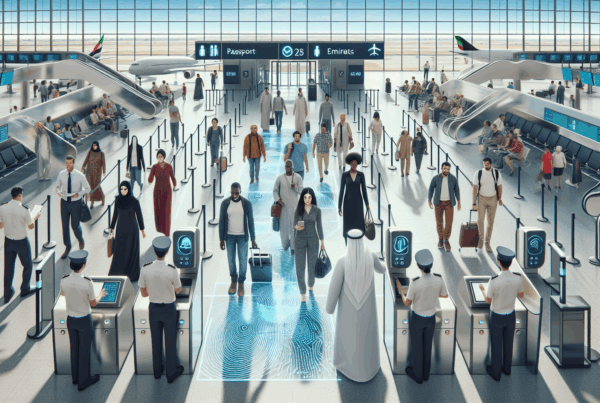Emirates speeds up roll-out of biometrics at Terminal 3 of theDubai airport (DXB)The aim is to enable passengers to pass through the terminal without ever taking out their passport. This technological shift promises to transform passenger routeBut it also raises questions about data protection, international interoperability and the new uses of travel.
Emirates at the forefront of a biometric 100% route according to Flywest
According to Flywest, the company has invested heavily to deploy over 200 biometric cameras in its main terminal. The initiative is part of a wider strategy aimed at reducing queues, speeding up theregistration and theboardingand offer a "one face, one token" experience: once registered, passengers are recognized at all key points in the terminal.
How the system works in practice
The process begins with registration via the Emirates app or at kiosks at the airport, linking the passenger's face to his or her flight data. Next, the facial recognition is used at check-in kiosks, lounge doors, immigration controls and boarding gates. The principle is simple: visual identity replaces the physical presentation of the passport, while keeping regulatory checks in the background.
Data security and management: challenges and guarantees
Security remains at the heart of the system. Players are putting forward encryption protocols and authentication systems to limit the risks of usurpation. The issue of biometric data storage is crucial: travelers need to know where and for how long their data is stored, and what access or deletion options are available to them. According to Flywest, partnerships between Emirates and local authorities aim to control these uses, but passengers are advised to be vigilant.
Consequences for airlines and airports
For companies, the adoption of airport biometrics means optimizing flows and reducing costs linked to delays and ground operations. Airports, for their part, can rethink the layout of their terminals to improve traffic flow and punctuality. The customer experience becomes a differentiating factor: faster boarding and shorter waiting times enhance the appeal of a hub like DXB.
International interoperability and standardization
A major challenge remains interoperability between systems on a country-by-country basis. For "travel without a passport" to be truly cross-border, biometric solutions must comply with international standards and enable secure exchanges between authorities. Bilateral or multilateral agreements and the adoption of standardized formats are necessary to ensure that European and global passengers enjoy a seamless journey on arrival and departure.
Impact on French and European travellers
French travellers are directly concerned: holders of biometric passports, they can already travel via automatic kiosks in several countries. The extension of the Dubai model means time savings on boarding and arrival, but also the need to master new digital reflexes, such as pre-registration via an application and understanding the rights linked to biometric data.
What passengers need to remember
Before traveling to Dubai, it is advisable to check Emirates' biometric check-in requirements and to register if the option is offered. Keep both digital and paper copies of your documents, as some controls may still require the physical presentation of a passport. Finally, it is important to find out about consent mechanisms and how biometric data can be deleted when the service allows.
Outlook: towards a global standard for paperless travel?
The Emirates and DXB initiative marks an important step towards a smoother, more connected journey. If other international hubs follow suit, and robust legal frameworks accompany deployment, facial recognition could become a standard feature of air travel. For this transition to be accepted, it will have to combine efficiency gains, respect for privacy and transparency for passengers.
The next few years will be crucial: the widespread adoption of the biometrics will depend as much on technological advances as on the trust that travelers and regulators place in these systems.




